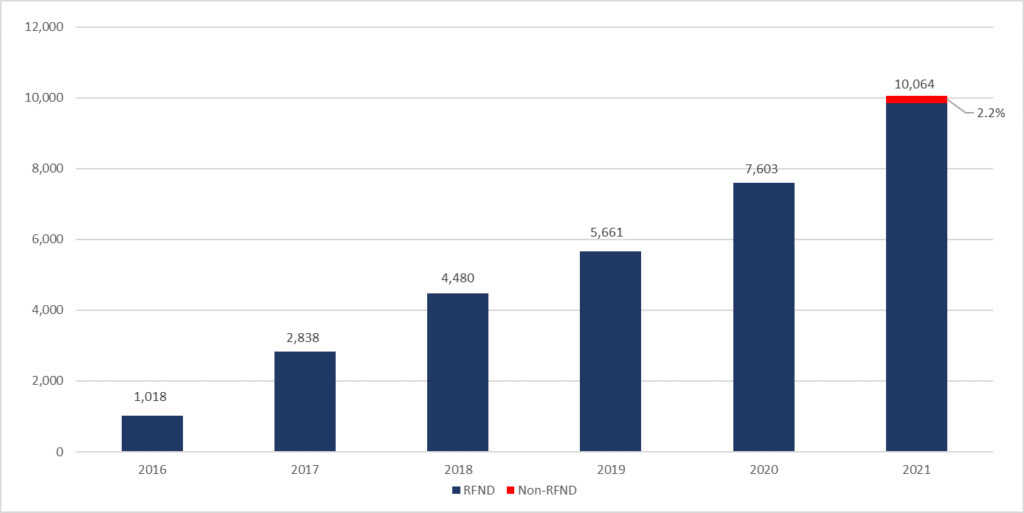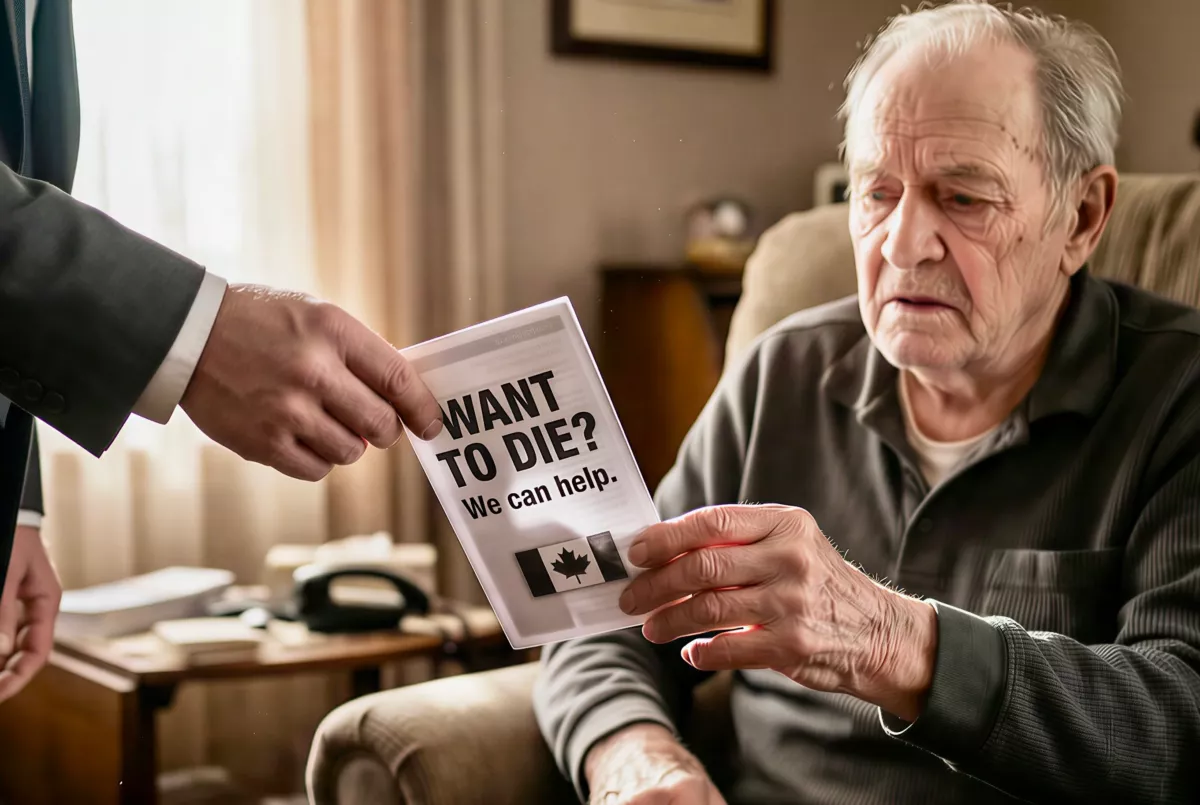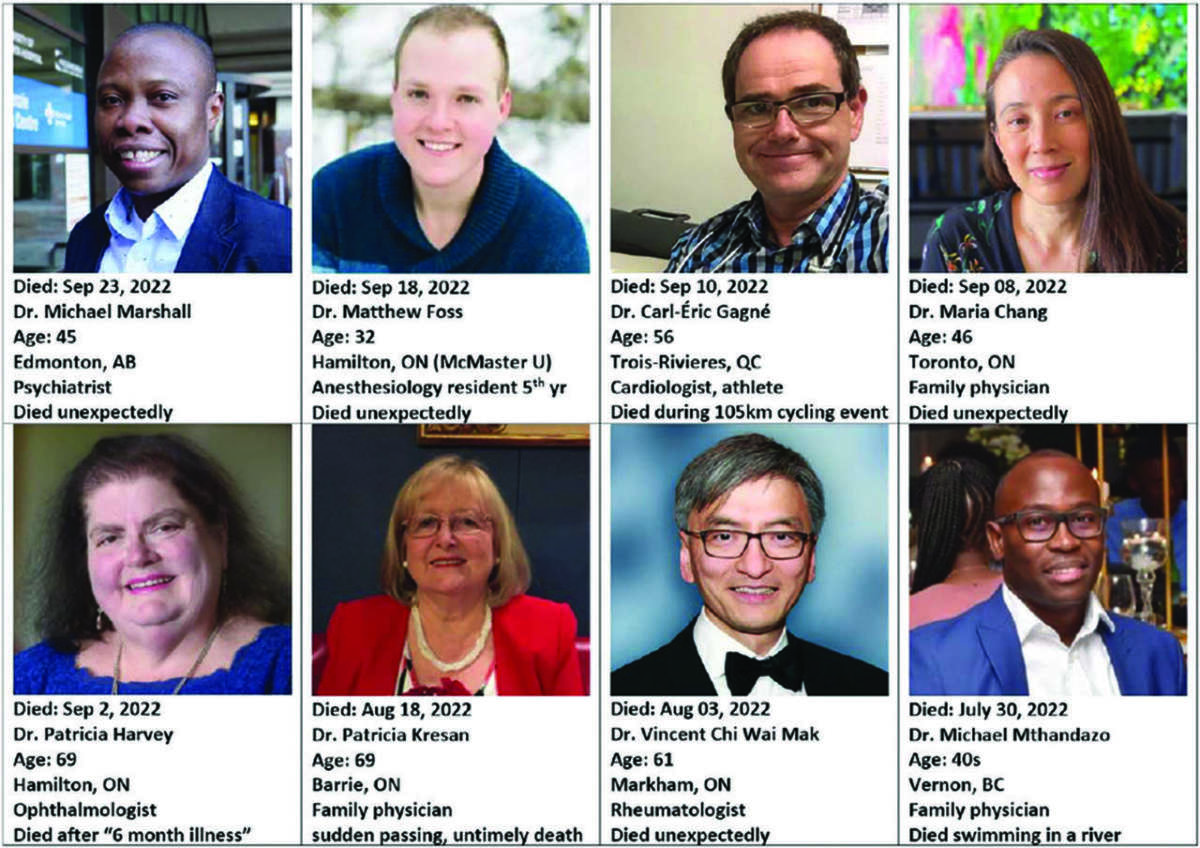
The Expansion of the Euthanasia Program in Canada graph
Image from Third annual report on Medical Assistance in Dying in Canada 2021
The Expansion of the Euthanasia Program in Canada
By Michelle Zeh
At one time, euthanizing a human being was considered a criminal offense in Canada. I recall the emotionally charged 1993 case of Canadian Sue Rodriguez—a woman crippled with excruciating Amyotrophic Lateral Sclerosis (ALS)—who lost her bid for the right to die with the assistance of a doctor in a 5-4 Supreme Court Ruling. When deciding the case, the near-equal division between the judges was indicative of how laws surrounding this complex and incredibly sensitive subject would evolve.
The first changes happened with a Supreme Court ruling in the February 2015 case, Carter vs Canada, which overruled the 1993 decision in the Rodriguez case. Essentially, the trial judge found that the prohibition against physician-assisted dying violates section 7 of The Charter of Rights and Freedoms of competent adults who are suffering intolerably due to a grievous and irremediable medical condition. In conclusion, the trial judge found that this infringement wasn’t justified under section 1.
The court suspended its ruling for twelve months to give the federal government enough time to amend its laws. In January 2016, the court granted a further four-month extension to allow time for the newly elected Trudeau government to ‘consult with Canadians’ on drafting a law to comply with the ruling. As an interim measure, it ruled that provincial courts could approve applications for euthanasia until the new law was passed.
Don’t lose touch with uncensored news! Join our mailing list today.
So, on April 14, 2016, The federal Minister of Justice introduced Bill C-14—Medical Assistance in Dying (MAiD)—in the House of Commons, to legalize euthanasia for Canadians with a “serious and incurable illness”, where proximate natural death is reasonably foreseeable. The Bill moved quickly through the House, was passed into law on June 17, 2016, and received Royal assent the same day. That year, Canada legally approved the euthanasia of 1,018 people.
On February 24, 2020, Bill C-7 was introduced in the House of Commons in response to the September 2019 Quebec Superior Court decision striking down the requirement in Bill C-14 that natural death is reasonably foreseeable to qualify for euthanasia. The bill received its first reading the same day and after some amendments, was eventually passed into law on March 21, 2021.
Interestingly, on October 20, 2020, before it was passed into law, a report released by Canada’s Parliamentary Budget Office stated that an estimated $62 million would be saved in 2021 by expanding the program as per Bill C7. While it is a mere drop in the bucket at 0.08% average savings, one has to wonder why we needed a cost-benefit analysis in the first place.
In July of this year, Health Canada released its Third Annual Report on Medical Assistance in Dying, capturing statistics for 2021. Of the 10,064 medically-assisted deaths, it states that cancer was the most commonly cited underlying medical condition at 65.6%. This was followed by cardiovascular conditions (18.7%), chronic respiratory conditions (12.4%), and neurological conditions (12.4%). Overall, MAiD deaths represented a total of 3.3% of deaths in Canada. For the first time since MAiD became legal, and as a direct result of Bill C-7, 2.2% of those deaths were people classed as non-RFND (Track Two) or having no reasonably foreseeable natural death. Some of the reasons for non-RFND requests were loneliness, isolation, reduced quality of life and poverty. How is poverty on the list when we send millions of our fiat dollars to foreign countries?
The report also states that only 7 of the 10,064 dead chose to take an overdose under medical supervision, instead choosing lethal injection by a MAiD practitioner. This is strikingly different compared with the US, where euthanasia hasn’t been legalized. Doctor-assisted suicide is legal in 11 states, but the person seeking death is prescribed barbiturates and must administer them orally on their own.
As I write this, the revised legislation is under review by a Special Joint Committee, to assess the provisions of the Criminal Code relating to MAiD. The government website states that it includes, but is not limited to, issues relating to mature minors (age 12-17), advance requests, mental illness, the state of palliative care in Canada and the protection of Canadians with disabilities. The review was due on October 17 but that date has passed and the meetings continue. They’re talking about ending human lives, so they need to get this right.
As CTV’s W5 reported in their episode titled ‘Death Wish”, 69-year-old John Priddle is an example of a Non-RFND, or Track Two case. He has a chronic and progressive neurological disorder called Friedreich’s Ataxia. It affects his speech, his ability to swallow and it makes walking difficult and slow. He once traveled the world but is now largely housebound. Mr. Priddle made an advance request and was approved for a MAiD death when the time is right for him.

Image from Third annual report on Medical Assistance in Dying in Canada 2021
Another man featured, Ray Cole, suffering from excruciatingly painful lung cancer that decimated his quality of life, welcomed the relief of a MAiD death. After the doctor placed the needle in his vein, he chose to depress the plunger of the syringe himself, while his wife lay by his side. It seemed a very peaceful process.
CTV also reports the polar opposite story of a 51-year-old Ontario woman suffering from severe multiple chemical sensitivities (MCS). For two years, she tried desperately and fruitlessly to find affordable housing, free of cigarette smoke and chemical cleaners. “The government sees me as expendable trash, a complainer, useless and a pain in the a**,” Sophia (not her real name) said in a video filmed on February 14, eight days before her death. She reportedly didn’t want to die and even had the support of a MAiD doctor in trying to secure a better home. In the end, she saw no other way out. The system failed her completely.
Kat (not her real name), a B.C. woman in her late 30’s, claims she has had an easier time accessing “death care” than health care. Kat wants to live, but she suffers from Ehler’s Danlos Syndrome (EDS), a genetic disorder where the body doesn’t produce adequate collagen (the glue that holds together connective tissues, skin and internal organs). Depending on the severity, a person with EDS can suffer from mildly loose joints to serious complications. The common thread among sufferers is significant pain requiring opioid painkillers. That need has interfered with Kat being able to find a replacement for her family doctor who moved away years before. She’s been seeing various nurse practitioners and a myriad of specialists, none of whom have experience in treating EDS. She told CTV News: “Our health-care system is set up so it’s really bouncing the patient around, treating symptom after symptom and not really addressing the underlying collagen issue. From a disability and financial perspective as well, I can’t afford the resources that would help improve my quality of life. Because of being locked in financially as well as geographically, it is far easier to let go than keep fighting.” She explained that while she had hoped to get access to palliative care or other supports in the process, her “suffering was validated to the extent of being approved for MAID, but no additional resource has opened up.” This is another sad example of the epic failure of our healthcare system in Canada.
In August, Global News reported that a Canadian Veteran suffering from PTSD and a traumatic brain injury was offered MAiD when he called Veterans Affairs seeking help. The service agent felt it appropriate somehow to bring up MAiD during the conversation. What kind of help is that?
In another instance, a 61-year-old B.C. woman’s medically-assisted death was carried out while she suffered from complex medical and mental health issues, triggering a police investigation. Medical professionals from Fraser Health facilitated Donna Duncan’s death despite the objections of her family physician and her daughters’ insistence that she wasn’t herself after a head injury in February 2020.
See? It’s not cut and dry. Mistakes are being made. It gets worse because March 17, 2023, marks the day when Canada’s MAiD laws will expand to include mental illness as a sole reason for seeking medically-assisted death: The government website states “The Government of Canada established an Expert Panel on MAID and Mental illness tasked with making recommendations on protocols, guidance and safeguards to apply to requests for MAID by persons who have a mental illness. This work will help ensure that practitioners are equipped to assess these requests in a safe and compassionate way based on rigorous clinical standards and legally mandated safeguards that are applied consistently across Canada.”
For one man with severe mental illness, euthanasia will be a welcome relief. John Scully, an 81-year-old retired journalist, has been struggling with severe depression, anxiety, suicidal ideation and post-traumatic stress disorder, from covering 35 wars. In his blog, found on the Dying With Dignity Canada website, he writes, … “it’s a clear case of human rights. The mentally ill must be treated as equal to the physically ill. We suffer terrible pain, even though it’s a different pain, and modern psychiatric medicine has few or no answers … no compassion, no relief, no death – unless the sufferer is then forced to die by suicide. This is one of the most undignified ways of dying, with botched attempts, finality by often brutal methods, followed by shock and intolerable pain for unprepared loved ones. That’s the reality of denying MAiD for the mentally ill.” In anticipation of being approved for a MAiD death, John told CTV “I would probably play some music and I would die peacefully. I don’t want to botch it again. I screwed up twice trying to kill myself.”
I am no expert on the treatment options for mental health, but I have suffered with depression and I know the feelings of absolute despair. I have also felt the indescribable pain of losing a very close loved one to suicide. I completely understand how people suffering with mental illness might jump at the chance of a medically assisted death rather than taking matters into their own hands. I just pray that the MAiD practitioners evaluating these cases discuss all potential solutions with the patient before approving a lethal injection.
Sadly, I predict that when the MAiD report for 2022 is released, we’re going to see a huge jump from 2021 because the Covid psy-op has and continues to damage human lives in unimaginable ways. In 2023, as mental health becomes a sole consideration, the numbers will skyrocket. This is just another facet of the depopulation agenda, where governments, at the behest of their globalist puppeteers, facilitate the removal of what they deem to be non-productive, human slaves, i.e – “useless eaters” from the world.













